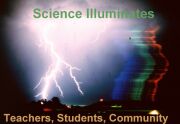Grading Period/ Grade |
Grading Period 1 |
Grading Period 2 |
Grading Period 3 |
Grading Period 4 |
Kindergarten |
Wood and Paper
(FOSS) |
Animals Two by Two (FOSS) |
|
|
First |
Comparing and Measuring
(STC) |
Solids and Liquids (FOSS) |
Insects
(FOSS) |
New Plants
(FOSS) |
Second |
Balance and Motion (FOSS) |
Changes
(STC) |
Soils
(STC) |
Air and Weather
(FOSS) |
Third |
Measurement
(FOSS) |
Sound
(STC) |
Structures of Life
(FOSS) |
Water
(FOSS) |
Fourth |
Magnetism and Electricity (FOSS) |
Microworlds
(STC) |
Food Chemistry
(STC) |
Earth Materials
(FOSS) |
Fifth |
Models and Design (FOSS) |
Mixtures and Solutions (FOSS) |
Landforms
(FOSS) |
Environments
(FOSS) |
Sixth
Health Teacher |
Earth in Space Exploring the Solar System
(SEPUP)
Food and Nutrition (FOSS) |
Diversity of Life
(FOSS) |
Chem 2
(SEPUP) |
Weather and Atmosphere
(SEPUP) |
Seventh
Health Teacher |
Rocks and Minerals
(SEPUP)
My Body and Me (SEPUP) |
Shaping the Land, Fruitvale, Plate Tectonics
(SEPUP) |
Energy, Machines, and Motion
(STC) |
Micro Life
(SEPUP) |
Eighth
Health Teacher |
Materials (SEPUP)
Human Brain and Senses (FOSS) |
Ecology and Evolution
(SEPUP) |
Force and Motion Investigating Energy from the Sun (SEPUP) |
Genetics (SEPUP) |




































